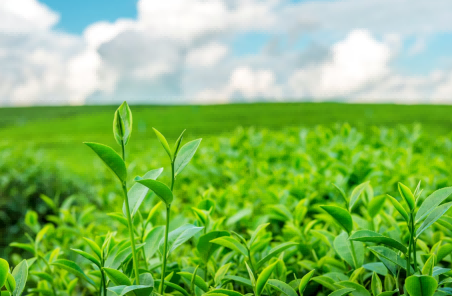 Export News
Export News
 21-07-2023
21-07-2023
India has a rich history of tea cultivation and is one of the world's largest producers and exporters of tea. The global demand for Indian tea continues to grow, making it a crucial component of the country's tea export industry.
In this article, Tendata will examine the trends in the volume and value of tea exports from India over the past few years. Understanding these changes is essential for stakeholders in the tea industry to make informed decisions, identify growth opportunities, and address challenges in the international tea export market.

Overview of India's Tea Export Industry:
India's tea export industry has witnessed significant growth in recent years. The country produces a wide range of tea varieties, catering to the preferences of tea enthusiasts worldwide. With favorable climatic conditions and skilled labor, India has established itself as a major player in the global tea export market.
Value of Tea Exports:
The value of tea exports from India has also experienced steady growth in recent years. In 2020, the total value of tea exports amounted to USD 900.92 Million. This value rose to USD 1,166.51Million in 2021, reflecting substantial growth. Furthermore, in 2022, the value of tea exports reached USD 1,223.94 Million. These figures demonstrate the increasing value of Indian tea in the global tea export trade and the recognition of its quality and flavor.
Factors Driving Growth:
Several factors have contributed to the growth of tea exports from India. Firstly, India's diverse tea varieties, such as Assam, Darjeeling, and Nilgiri, have gained international recognition for their distinct flavors and quality. These unique characteristics have attracted tea enthusiasts and connoisseurs worldwide. Additionally, India's emphasis on sustainable and organic tea production has further enhanced its appeal in international markets, where consumers are increasingly conscious of ethical and environmentally friendly products.
Market Expansion and Opportunities:
Indian tea exporters have successfully expanded their market reach to new and emerging markets. While traditional markets like the United Kingdom, Russia, and the United States remain important, there has been a growing demand for Indian tea in regions such as the Middle East, East Asia, and Africa. Diversifying tea export destinations allows Indian tea exporters to mitigate risks and seize opportunities in different markets.
Challenges and Strategies:
Despite the positive growth trends, the tea export industry in India faces certain challenges. Fluctuations in weather patterns, pest infestations, and labor shortages can impact tea production and subsequently affect tea export volumes. To address these challenges, stakeholders in the industry must focus on sustainable agricultural practices, invest in research and development, and establish robust supply chain management systems. Additionally, exploring value-added tea products and leveraging technology for marketing and distribution can help Indian tea exporters stay competitive in the global market.
Future Outlook:
The future of tea exports from India appears promising. With the increasing global demand for high-quality and specialty teas, Indian tea exporters have the opportunity to further expand their market share. To capitalize on this, continuous investment in tea product innovation, branding, and market intelligence will be crucial. Additionally, fostering strong relationships with tea buyers, participating in international tea trade fairs and exhibitions, and complying with international quality and safety standards will enhance the reputation and credibility of Indian tea in the global tea export market.
Conclusion:
The volume and value of tea exports from India have shown positive growth over the past few years, highlighting the country's significance in the global tea export market. By capitalizing on India's diverse tea varieties, emphasizing sustainability, and expanding into new tea export markets, tea exporters can continue to drive the growth of the industry. However, addressing challenges such as weather variability and labor shortages, and implementing strategies for tea product innovation and market expansion, will be crucial for sustaining this growth and ensuring India's position as a leading player in the global tea export trade.
Category
Leave Message for Demo Request or Questions


 T-info
T-info T-discovery
T-discovery

 My
Tendata
My
Tendata Market Analysis
Market Analysis Customer
Development
Customer
Development Competitor
Monitoring
Competitor
Monitoring Customer Relationship
Customer Relationship





































































































































